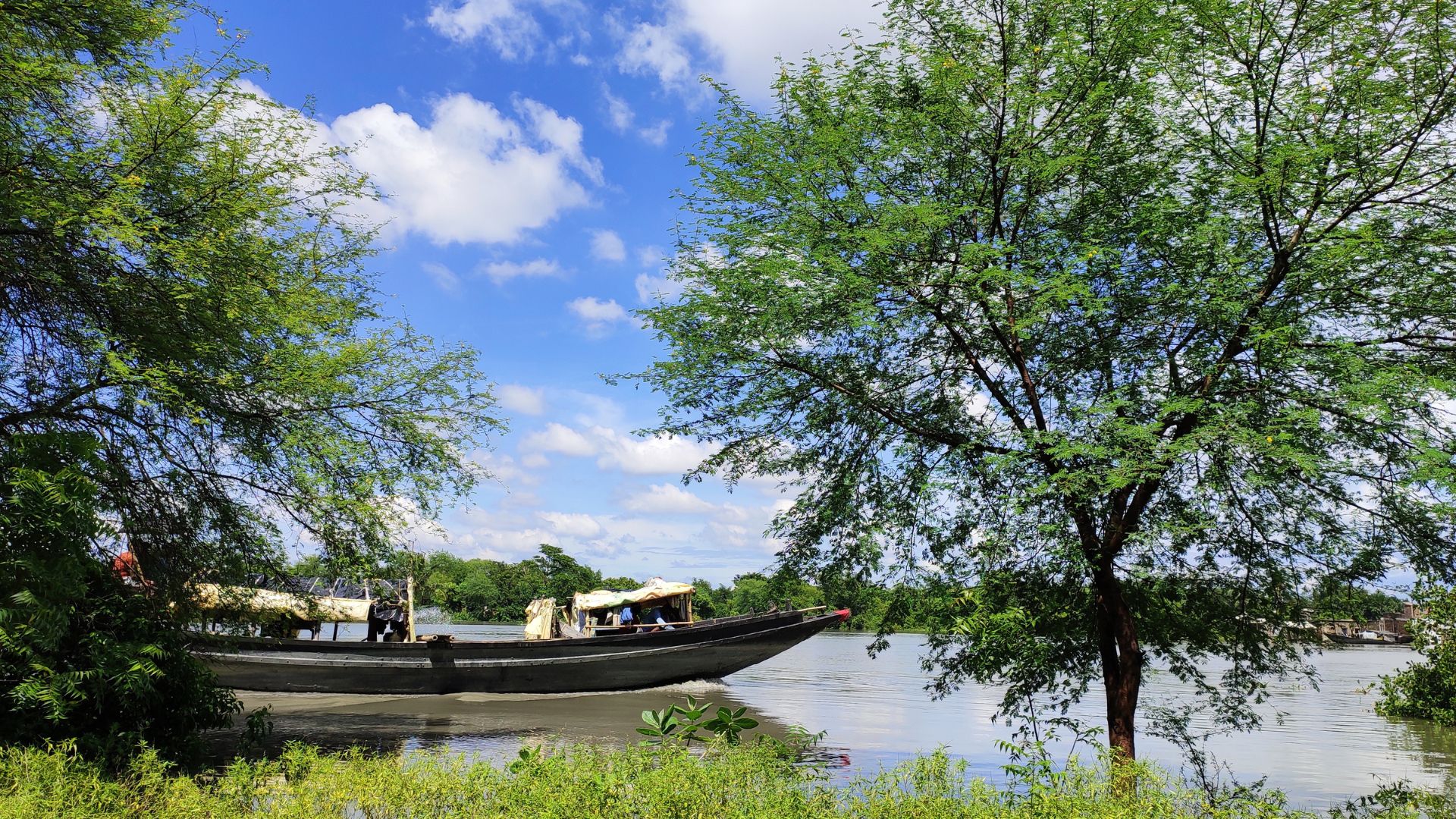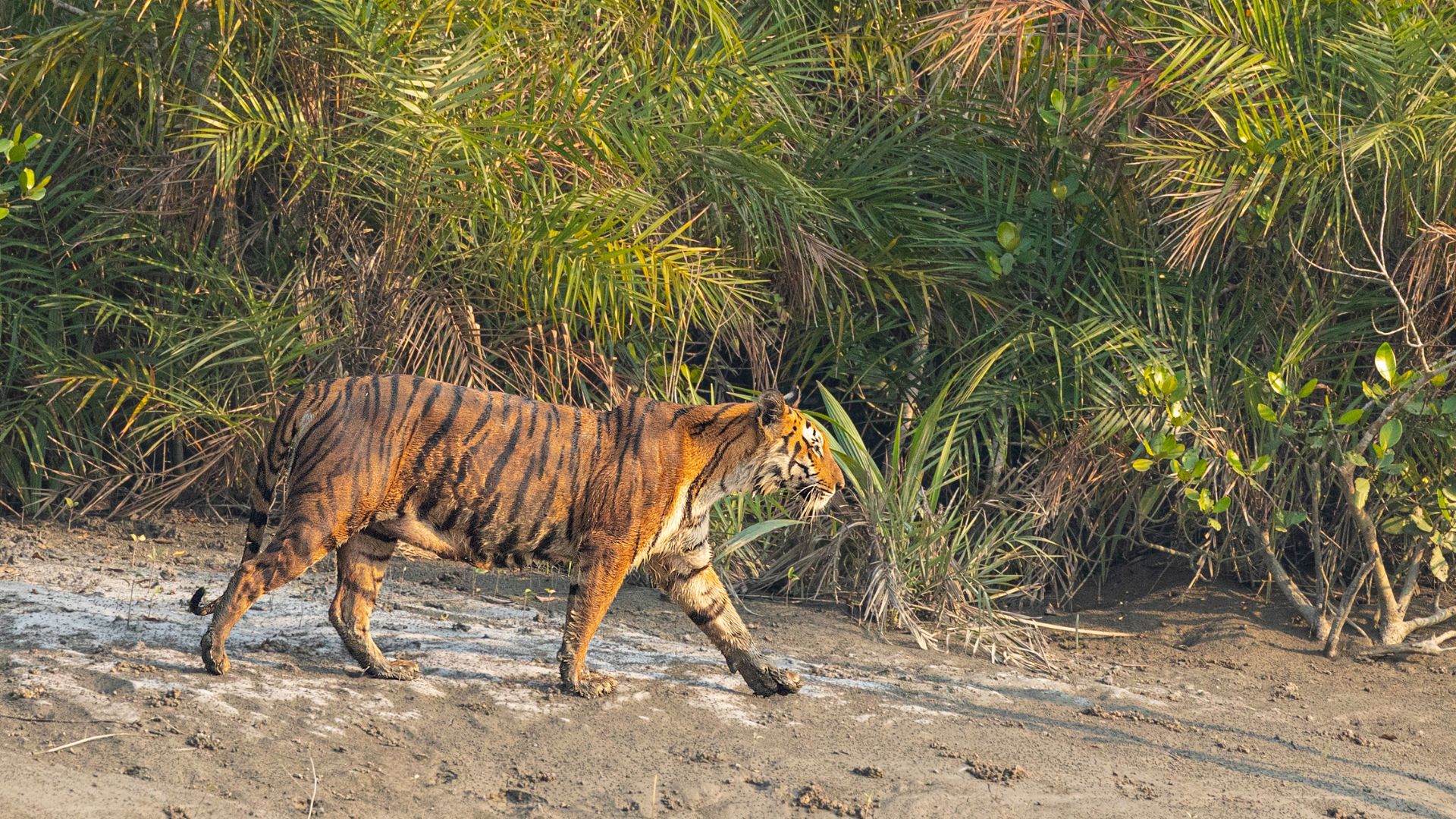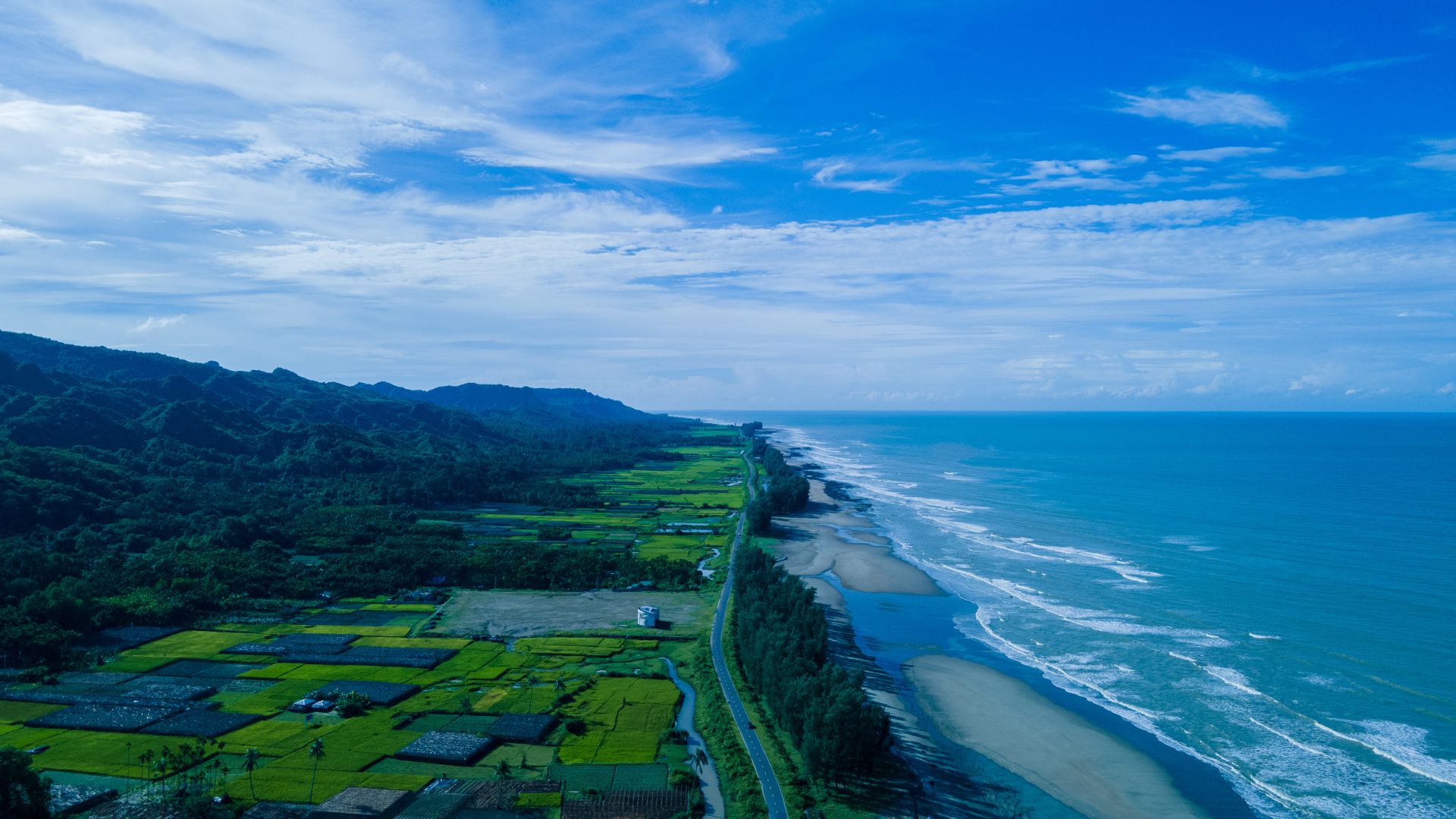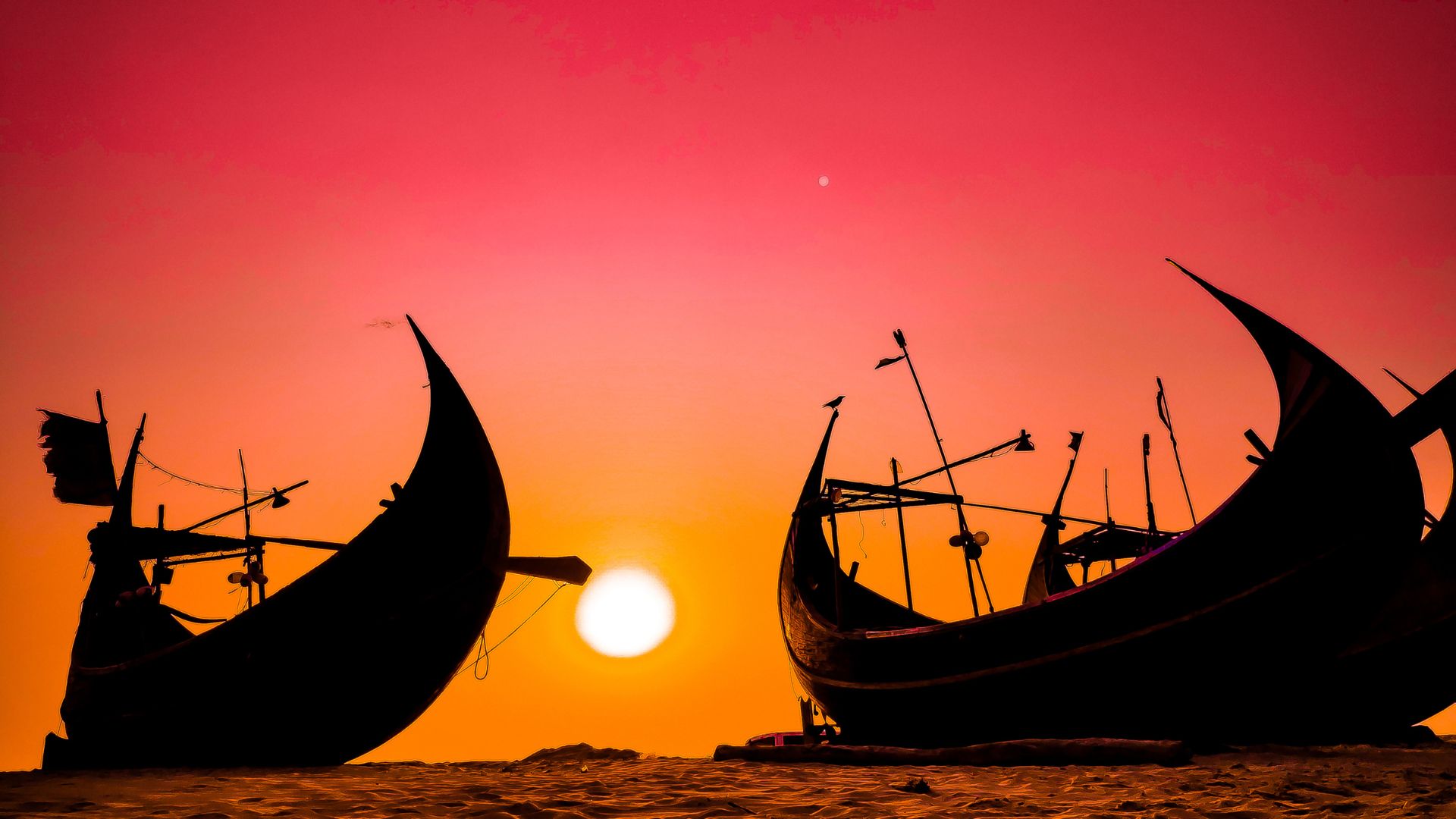Dhaka, the vibrant capital of Bangladesh, is a city of contrasts where centuries-old Mughal architecture stands alongside modern skyscrapers, where rickshaws navigate chaotic streets filled with 20+ million people, and where the energy is palpable from dawn to midnight. Often dismissed as merely a transit point, Dhaka actually rewards curious travelers with rich history, fascinating museums, bustling markets, delicious food, and genuine warmth from locals eager to share their city.
Yes, Dhaka is overwhelming - the traffic is legendary, the crowds are constant, and the sensory overload is real. But beneath the chaos lies a city with 400+ years of history, from its days as a Mughal provincial capital to its role as the birthplace of Bengali nationalism. The city's museums tell stories of ancient civilizations, independence struggles, and artistic heritage. Its markets offer everything from traditional crafts to cutting-edge electronics. Its food scene ranges from street food stalls serving the best biryani in the country to modern cafes with international cuisine.
This comprehensive guide will help you navigate Dhaka like a local, discover attractions beyond the tourist trail, find the best markets for shopping, understand transportation options, stay safe, eat well, and even escape the city for fascinating day trips. Whether you have 24 hours or a full week, whether you're a history buff, food lover, or market explorer, this guide has you covered.
Top Attractions & Historical Monuments
Liberation War Museum (Muktijuddho Jadughar)
This is Dhaka's most important museum and an absolute must-visit for understanding Bangladesh's history. The museum chronicles the 1971 Liberation War through photographs, documents, weapons, and personal testimonies. The exhibits are emotionally powerful, showing the journey from Pakistani oppression through the brutal genocide to eventual independence.
The museum moved to a larger location in Agargaon in 2017, with modernized exhibits including multimedia presentations. You'll see artifacts like torture instruments used by Pakistani forces, photographs of mass graves, letters from martyrs, and the moment of Pakistani surrender. Allow at least 2-3 hours to fully absorb the exhibits.
Location: Agargaon, Sher-e-Bangla Nagar
Hours: 10:00 AM - 5:00 PM (Closed Mondays and government holidays)
Entry: 20 BDT for Bangladeshis, 100 BDT for foreigners
Pro tip: Visit on a weekday to avoid crowds. Photography is allowed in most areas.
Lalbagh Fort (Lalbagh Kella)
This 17th-century Mughal fort complex is Dhaka's most famous historical site. Built in 1678 by Prince Muhammad Azam (son of Emperor Aurangzeb), the fort was never completed - legend says it was abandoned after the death of Pari Bibi, whose beautiful tomb stands at the center of the complex.
The fort includes three main buildings: the Diwan-i-Aam (audience hall), the hammam (bathhouse), and Pari Bibi's tomb with its distinctive black basalt structure. The central tank reflects these buildings beautifully, especially at sunset. The fort grounds are well-maintained with gardens and pathways perfect for leisurely exploration.
Location: Old Dhaka, near the Buriganga River
Hours: 10:00 AM - 6:00 PM (April-September), 10:00 AM - 5:00 PM (October-March), Closed Sundays
Entry: 30 BDT for Bangladeshis, 200 BDT for foreigners
Best time: Late afternoon for good lighting and fewer crowds
National Museum of Bangladesh
Bangladesh's largest museum houses an impressive collection spanning archaeology, history, ethnography, natural history, and contemporary art. The archaeology section features terracotta artifacts from ancient Bengal, Buddhist sculptures from Paharpur, and Hindu statuary. The ethnography galleries showcase tribal cultures, traditional crafts, and lifestyle displays.
The Liberation War gallery provides another perspective on 1971, complementing the dedicated Liberation War Museum. Don't miss the natural history section with stuffed Bengal tigers, crocodiles, and the diverse fauna of Bangladesh.
Location: Shahbag, near Dhaka University
Hours: 10:30 AM - 5:30 PM (April-September), 10:00 AM - 5:00 PM (October-March), Closed Wednesdays
Entry: 30 BDT for Bangladeshis, 100 BDT for foreigners
Time needed: 2-3 hours for comprehensive visit
Ahsan Manzil (Pink Palace)
This stunning pink palace on the banks of the Buriganga River was the residential palace of the Nawab of Dhaka. Built in 1872, the Indo-Saracenic architecture features a distinctive pink facade, large dome, and ornate interiors. Today it operates as a museum showcasing the lifestyle of Dhaka's aristocracy during the British Raj.
The museum displays antique furniture, portraits, artifacts, and photographs chronicling the Nawab family's history. The palace's symmetrical architecture and riverside location make it one of Dhaka's most photogenic landmarks, especially during golden hour.
Location: Kumartoli, Old Dhaka, on the Buriganga River
Hours: 10:30 AM - 5:30 PM (Summer), 10:00 AM - 5:00 PM (Winter), Closed Thursdays
Entry: 20 BDT for Bangladeshis, 100 BDT for foreigners
Combine with: Sadarghat River Port (5-minute walk)
Sadarghat River Port
This is not a tourist attraction in the traditional sense - it's a working river port and one of the busiest terminals in the world. Hundreds of boats arrive and depart daily, carrying passengers and cargo to destinations across Bangladesh. The organized chaos is mesmerizing: vendors selling snacks, passengers rushing to catch ferries, porters carrying impossibly heavy loads, and wooden country boats jostling for position.
Best visited early morning (6-8 AM) or evening (4-6 PM) when activity peaks. Walk along the ghats, watch the boats, interact with passengers, and feel the pulse of Bangladesh's riverine culture. The Rocket steamer (historic paddle-wheeler) departs from here for overnight journeys to Khulna/Barisal.
Location: Sadarghat, Old Dhaka
Best time: Early morning or late afternoon
Entry: Free (you're just observing the port)
Photography: Incredible photo opportunities, but ask permission before photographing people
Dhaka University & TSC Area
Bangladesh's premier university campus is worth exploring for its historic buildings, green spaces, and vibrant student culture. Key spots include the Curzon Hall (built 1904, stunning red-brick Mughal revival architecture), the Teacher-Student Center (TSC - hub of student activism), and the Shaheed Minar (Language Martyrs' Memorial).
The TSC area is fascinating for people-watching, with students debating politics, playing music, selling books, and gathering at tea stalls. The nearby Nilkhet book market offers incredibly cheap books (mostly pirated but also original publications).
Location: Shahbag area
Best time: Weekday afternoons when campus is active
Entry: Free, open campus
Nearby: Shaheed Minar (5-minute walk), National Museum (adjacent)
Markets & Shopping Districts
New Market
This sprawling market complex in Azimpur has been Dhaka's shopping hub since 1954. It's a maze of shops selling everything imaginable: clothing, electronics, cosmetics, shoes, bags, home goods, and fabrics. The market is especially known for affordable clothing (both local and imported), traditional Bangladeshi wear (sarees, punjabis, shalwar kameez), and fabric shops.
New Market can be overwhelming - it's crowded, hot, and requires bargaining skills. But prices are significantly lower than mall shopping, and the variety is unmatched. Best visited on weekday mornings to avoid weekend crowds.
Location: Azimpur, between Elephant Road and New Nilkhet
Hours: 10:00 AM - 9:00 PM (most shops), closed Fridays
Best for: Affordable clothing, traditional wear, fabric
Bargaining: Essential - start at 50-60% of asking price
Banga Bazaar
Known as the "second-hand clothing market," Banga Bazaar specializes in imported used clothing from Western countries, sold at incredibly low prices. You can find designer brands, vintage items, and quality clothes for 100-500 BDT per piece. The market requires patience and willingness to dig through piles, but treasure hunters can score amazing deals.
The market operates daily but Sunday morning (after the weekly shipment arrives) offers the best selection. Bring hand sanitizer and prepare to get dusty while searching through bundles of clothes.
Location: Gulistan, near the Secretariat
Hours: 10:00 AM - 8:00 PM daily
Best for: Cheap clothing, vintage finds, Western brands
Pro tip: Visit Sunday morning for fresh stock, bring small bills for bargaining
Chawkbazar & Old Dhaka Markets
Old Dhaka's warren of narrow lanes hosts numerous specialized markets. Chawkbazar is famous for traditional food items (spices, sweets, pickles, dried fish), especially spectacular during Ramadan for iftar items. Shankhari Bazar specializes in Hindu religious items and brass/copper goods. Lalbagh area has fabric and tailoring shops.
Shopping in Old Dhaka is as much cultural experience as commercial transaction. The buildings are historic, the lanes atmospheric, and locals are friendly once you slow down and engage. Best explored on foot, ideally with a local guide to navigate the maze.
Location: Various areas in Old Dhaka
Best time: Morning to avoid heat and crowds
Best for: Traditional items, spices, brass goods, cultural experience
Warning: Very crowded, easy to get lost - note landmarks
Aarong
If markets overwhelm you, Aarong is the civilized alternative - an upscale handicraft chain selling high-quality Bangladeshi products with fixed prices (no bargaining needed). They offer traditional clothing, handloom textiles, leather goods, jewelry, home decor, and handicrafts. Quality is excellent, designs are contemporary interpretations of traditional crafts, and shopping is air-conditioned and organized.
Prices are higher than markets but still reasonable by Western standards, and you're supporting rural artisans. Aarong is perfect for gifts, high-quality sarees, and when you want quality assurance without market chaos.
Locations: Gulshan, Dhanmondi, Uttara (multiple branches)
Hours: 10:00 AM - 8:30 PM
Best for: Quality handicrafts, gifts, traditional clothing
Price level: Mid to high-end, fixed prices
Bashundhara City Shopping Mall
South Asia's formerly largest shopping mall (until recently surpassed), this 19-story complex houses 2,500+ shops, restaurants, entertainment zones, and a cinema. It's a modern, air-conditioned escape from Dhaka's heat and chaos, popular with middle-class families and youth.
You'll find international brands (or local versions), food courts, electronics, books, kids' entertainment, and everything in between. While less "authentic" than traditional markets, it's comfortable, safe, and offers fixed prices.
Location: Panthapath
Hours: 10:00 AM - 10:00 PM
Best for: Modern shopping experience, food courts, entertainment
Pro tip: Can be extremely crowded on weekends - weekdays are better
Day Trips from Dhaka
Sonargaon (60 km, 2 hours)
Bangladesh's ancient capital (13th-16th centuries) makes a fascinating day trip. The main attractions are the Panam City ruins - a ghost town of 52 colonial mansions along a single street, abandoned since partition. The crumbling buildings with their ornate facades create an atmospheric, slightly eerie setting perfect for photography.
Also visit the Folk Art and Crafts Museum housed in a beautiful colonial building, showcasing traditional Bengali crafts, lifestyle, and culture. The museum grounds include traditional village houses and artisan workshops.
How to reach: Hire a car (full day 3,000-4,000 BDT) or take a bus from Gulistan (100-150 BDT, 2-3 hours)
Entry fees: Panam City 300 BDT for foreigners, Folk Museum 100 BDT
Combine with: Meghna River crossing, local village visits
Time needed: Half day to full day
Srimangal Tea Gardens (170 km, 4-5 hours)
While technically more than a day trip, Srimangal can be done as a long day trip or preferably as an overnight trip. Bangladesh's tea capital offers rolling green tea plantations, walks through estates, tea factory visits, and the famous seven-layer tea at Nilkhet Tea Cabin.
Visit Lawachara National Park (tropical rainforest with hoolock gibbons), explore tea gardens, and experience the unique tea-making process. The journey itself is scenic, passing through rural Bangladesh.
How to reach: Train from Dhaka (Paharika Express, 4-5 hours, 200-400 BDT) or hired car
Recommended: Overnight stay to fully experience the area
Activities: Tea garden walks, forest trekking, seven-layer tea tasting
Best season: November-February (pleasant weather)
Bhawal National Park (40 km, 1.5 hours)
The closest nature escape from Dhaka, this sal forest offers walking trails, picnic spots, and glimpses of Bangladesh's natural environment. While not pristine wilderness (it's popular with local picnickers), it provides a green respite from urban chaos.
The park has deer, monkeys, various birds, and during winter, migratory birds. Best visited early morning before crowds arrive.
How to reach: Bus to Gazipur (50-80 BDT, 1.5 hours) then rickshaw to park, or hired car
Entry: Minimal fee (20-50 BDT)
Best time: Early morning, winter months
Bring: Mosquito repellent, water, snacks
Practical Information for Visiting Dhaka
Transportation in Dhaka
Rickshaws: The quintessential Dhaka experience. Cycle rickshaws are everywhere, cheap (30-100 BDT for short rides), and can navigate traffic better than cars. Agree on price before starting. Manual rickshaws cannot access highways or major roads.
CNGs (Auto-rickshaws): Three-wheeled motorized vehicles perfect for medium distances. Always insist on meter (rarely agreed) or negotiate fixed price before starting. Typical ride: 80-200 BDT depending on distance.
Uber/Pathao: Ride-hailing apps work well in Dhaka. Much easier than negotiating with drivers, fixed prices, and trackable. Motorbike option (Pathao) is fastest during traffic. Download apps before arrival.
Buses: Cheap but chaotic - not recommended unless you're experienced. Overcrowded, no fixed stops, and drivers are aggressive. If adventurous: 15-30 BDT for most routes.
Timing: Dhaka's traffic is legendary. Avoid 8-10 AM and 5-8 PM peak hours when possible. A 5 km journey can take 15 minutes or 90 minutes depending on timing.
Safety Tips
Generally safe: Dhaka is relatively safe for tourists. Violent crime against foreigners is rare. Main risks are pickpocketing in crowded areas and traffic accidents.
Pickpockets: Watch belongings in crowded markets, buses, and events. Keep valuables in front pockets or secure bags.
Traffic safety: The biggest danger. Crossing streets is an adventure - follow locals, cross confidently (hesitation causes problems), watch all directions.
Women travelers: Dhaka is generally safe but conservative. Dress modestly (covered shoulders/knees), avoid empty streets after dark, use Uber rather than walking at night. Harassment is usually verbal, rarely physical - firm "no" and walking away works.
Scams: Mostly minor - overcharging by rickshaw/CNG drivers, fake guides. Use apps for transport, ignore touts, and always verify guide credentials.
Where to Eat
Old Dhaka: Haji Biriyani (legendary kacchi), Star Kabab, Bismillah Restaurant (haleem, traditional food), numerous street food stalls
Dhanmondi/Mohammadpur: Kasturi Restaurant (Bengali), Star Kabab & Restaurant, Jhilpar Fuchka
Gulshan/Banani: Cafe Mango, Pan Tao, Izumi (Japanese), The Kitchen (Italian), Sakura (Japanese)
Budget: Street food, local restaurants (meal: 100-200 BDT)
Mid-range: Quality restaurants (meal: 500-800 BDT)
High-end: Hotel restaurants, upscale dining (meal: 1,500-3,000 BDT)
Where to Stay
Budget (under $20): Hotel 71, Hotel Al-Razzaque (basic but clean)
Mid-range ($30-60): Hotel Ornate, Hotel Sarina (Banani), Best Western Plus (Gulshan)
High-end ($80+): Radisson (Dhaka), Pan Pacific Sonargaon, Le Méridien
Best areas: Gulshan/Banani (upscale, safe, restaurants), Dhanmondi (central, universities), Old Dhaka (atmospheric but basic options)
Essential Information
Currency: Bangladeshi Taka (BDT). 1 USD ≈ 110 BDT. ATMs widely available, cards accepted at malls/hotels but carry cash for markets/street food.
SIM cards: Available at airport and mobile shops. Grameenphone and Robi have best coverage. Bring passport photo and copy. Cost: 100-300 BDT with data package.
Language: Bengali/Bangla. English spoken in tourist areas, hotels, and by educated people. Learn basics: "Dhonnobad" (thank you), "Koto taka?" (how much?).
Best time to visit: November-February (cool, dry). Avoid April-June (very hot, humid) and July-September (monsoon). March is acceptable but warming up.
Dress code: Conservative. Men: long pants acceptable (shorts draw attention). Women: covered shoulders and knees, loose clothing recommended.
Conclusion: Embrace the Chaos, Discover the Magic
Dhaka will test you - there's no sugarcoating it. The traffic will frustrate you, the crowds will overwhelm you, the heat and humidity will exhaust you, and the sensory overload will leave you dizzy. But if you lean into the experience rather than resist it, if you slow down and observe rather than rushing through, if you engage with locals rather than retreating into tourist bubbles - Dhaka will reward you with experiences and insights impossible to find in guidebook-friendly destinations.
This is a city where 20 million people live, work, dream, and thrive despite (or perhaps because of) the chaos. Where rickshaw painters create mobile art galleries, where students debate politics over tea at TSC, where the Buriganga River still pulses with commerce as it has for centuries, where modernity and tradition collide daily in fascinating ways. The museums tell stories of struggle and triumph that shaped modern Bangladesh. The markets showcase entrepreneurship and hustle at every level. The food scene proves that great cuisine doesn't require fancy restaurants - some of the best meals happen on plastic stools at street corners.
Dhaka is not for everyone, and that's okay. If you need perfectly organized tourism infrastructure, predictable experiences, and Instagram-ready cleanliness, this probably isn't your city. But if you're curious about real urban South Asian life, if you want to understand Bangladesh beyond stereotypes, if you appreciate history, culture, and human resilience - Dhaka has much to offer.
Final tips for making the most of Dhaka:
- Lower your expectations about comfort, raise your openness to experience. The city rewards flexibility and patience.
- Hire a guide for your first day or two. A good local guide (through your hotel or Tourfo.com) helps you navigate efficiently and provides context that transforms random chaos into meaningful experiences.
- Don't try to see everything. Choose 2-3 attractions per day, allowing time for traffic, rest, and spontaneous discoveries.
- Talk to people. Bangladeshis are curious and friendly. Simple conversations lead to unexpected invitations, recommendations, and friendships.
- Give the city at least 2-3 days. Dhaka grows on you. What seems chaotic on day one becomes fascinating by day three.
Remember that Dhaka is still developing as a tourist destination - infrastructure is improving, but it's not there yet. You'll encounter challenges, but also kindness. You'll face frustration, but also wonder. You'll want to leave, but also find yourself planning a return visit to explore neighborhoods you missed.
Most travelers pass through Dhaka as quickly as possible, racing to beaches or hill stations. Those who stay discover that the capital itself is one of Bangladesh's most fascinating destinations - not despite its challenges, but because of the authentic, unfiltered urban experience it offers. So book your hotel, download your ride apps, bring your patience, and prepare to discover a city that will challenge and surprise you in equal measure.
Welcome to Dhaka. The chaos is the point.







